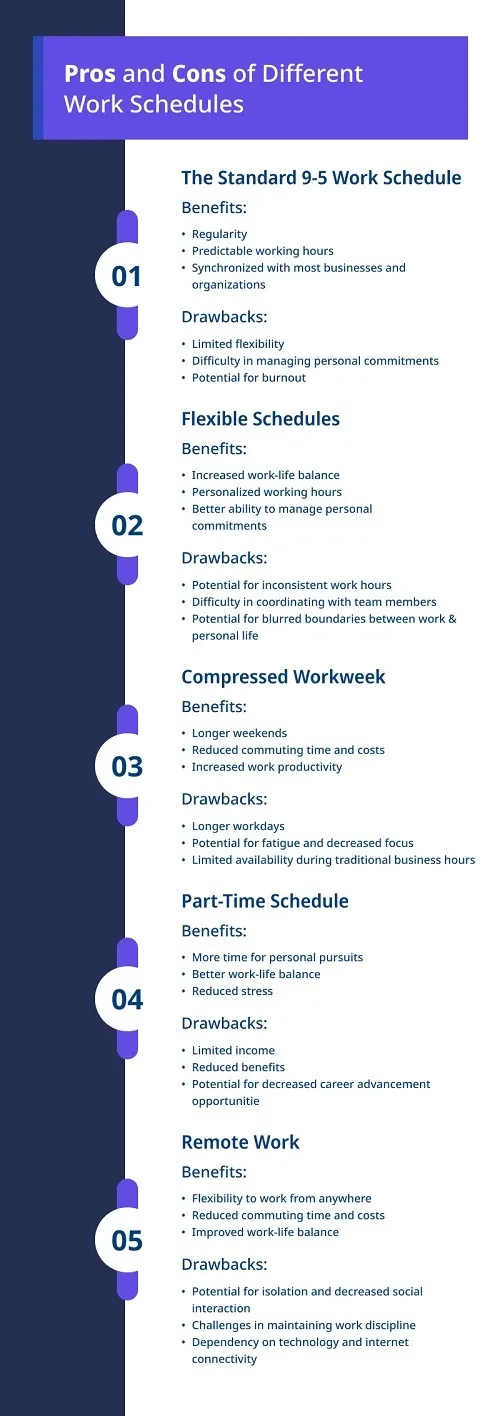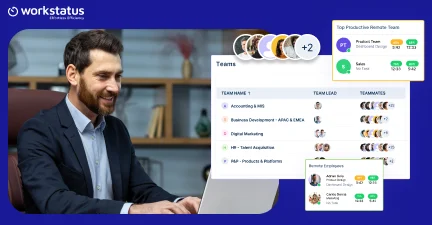Table of Contents
Introduction
Are you tired of the 9-5 grind?
Don’t we all want to balance our work and home life better?
From employees to employers, work-life balance has become an increasingly important aspect of professional lives.
Due to such demand, organizations have explored different work schedules to accommodate everyone’s needs and preferences.
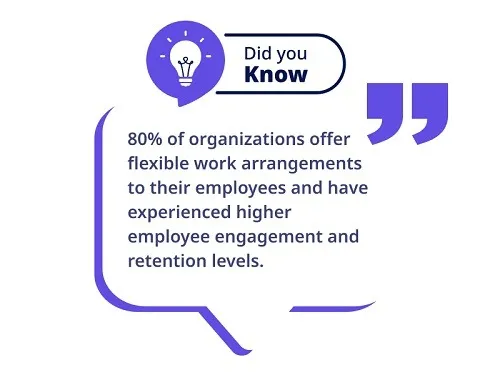
This statistic shows that HR managers and team leaders are now dwelling on forming diverse work schedules for their team members to increase productivity, morale, and profits.
However, adopting different work schedules for different employees comes with challenges that require a delicate balance between the needs of employees & the company’s objective of achieving maximum productivity.
This blog post will explore the different work schedules available to teams today.
The specific topics that this post will cover are:
- Importance of work schedules
- Different types of work schedules
- Benefits and potential drawbacks of each work schedule type
- Challenges in managing work schedules
- Solutions that can help employers develop and maintain successful work schedules for their teams
From compressed workweeks to job sharing, we’ll break down the different types of work schedules for teams so you can decide which one is right for your team.
So without further ado, let’s jump right into our topic:
Understanding The Importance Of Work Schedules
Why Work Schedules Are Crucial?
A work schedule is to plan when employees will work and how their working hours will be divided.
It is a fundamental component of any successful business, as it ensures that the
- Necessary tasks are done in a timely manner without overburdening the team
- Tasks are distributed in an equitable and efficient manner
- Resources are used efficiently, maximizing productivity and increasing employee morale
Effective scheduling ultimately helps organizations achieve greater efficiency overall, leading to improved performance outcomes in both short-term objectives & long-term goals.
Impact of Work Schedules On Employees?
Work schedules directly impact
- Employee productivity
- Work-life balance
- Overall well-being
For instance, flexible work flexibility allows employees to choose their preferred shift hours, leading to:
- Increased motivation
- Improved morale
- Higher job satisfaction
Similarly, part-time schedules or compressed weeks could help reduce stress levels caused by intense workloads while increasing the leisure time available for:
- Rest
- Recreation
- Personal development
On the other hand, rigid or inflexible work schedules can lead to:
- Decreased job satisfaction
- Employee burnout
- Lower morale
- An overall decrease in performance
Therefore, teams and organizations must establish scheduling practices that promote healthy habits without compromising team performance.
Role Of HR Managers in Creating Work Schedules
Human resource managers are key in creating flexible, effective work schedules. Their tasks entail:
- Understanding the employee’s preferences to create an effective distribution plan for the team’s workload.
- Monitoring and evaluating employees’ performance on an ongoing basis to identify areas of improvement or stress points.
- Communicating with all team members regularly to ensure that their work schedules are aligned with their goals, values, and preferences.
- Creating flexible policies and procedures as needed to promote work-life balance among the team.
- Ensuring that every employee is treated fairly & given equal growth opportunities.
With such responsibilities, HR managers are known to be the driving force behind creating successful and balanced work schedules for their teams.
As we now have an understanding of why work schedules are important, let’s move ahead to:
Different Types Of Work Schedules
1. The Standard 9-5 Work Schedule
This is the traditional workweek lasting 8-9 hours each day from Monday to Friday.
Employees typically work simultaneously throughout the week and can take two days off on weekends.
2. Flexible Schedules
Flexible working hours allow employees to choose their start & end times within a certain range while still fulfilling the required hours per day or week.
This schedule provides employees with:
- Greater control over their working hours
- More freedom to balance work and life responsibilities
- Improved morale with greater independence
3. Compressed Workweek
This is a schedule in which employees work longer hours but fewer days.
For instance, instead of working 8 hours for 5 days (which totals 40 hours/week), an employee can work 10 hours for 4 days (also totaling 40 hrs/wk).
The upside to this type of schedule is that:
- Employees get more days off in a week
- Reduced number of office days leading to cost saving in traveling cost
4. Part-Time Schedule
Part-time schedules typically involve working fewer hours than a full-time schedule.
This type of work schedule is often used when an employee needs to take on another job or wants to reduce their workload for family commitments or personal reasons.
They generally work less than 30 hours/ week and may be permanent or temporary.
5. Remote Work
With the advent of technological advances, many companies now offer opportunities for employees to work remotely from home or any other location.
This type of schedule is beneficial because:
- Employees can work in a comfortable environment from any location
- Allows for greater diversity and talent from all over the world
- Reduces the overhead cost associated with renting/maintaining offices spaces
Now that we have discussed each of these types of work schedules, let’s jump into
Success Stories:
Companies Who Have Implemented Different Work Schedules
1) Dell

Dell embraced flexible work culture in 2009 due to employee demand. HR, IT, and facilities teams collaborated to provide training and technology for remote work.
The program succeeds, with 60% of employees working flexibly and higher job satisfaction.
Dell saves $12 million annually on office space leading to higher productivity and cost savings.
2) Humana

Technology drove work flexibility policies at Humana, a U.S. healthcare company.
In 2016, Humana revamped its remote work policies, leading to nearly half of the staff working remotely. However, the call center team couldn’t benefit due to desk-bound call recordings.
Humana explored new technologies and launched a pilot program in 2018, enabling call center employees to work from home.
This technology transformed the work experience, allowing the team to enjoy the same perks and save on desk space.
The inclusive, flexible work policies attracted top talent and expanded the talent pool. As a result, Humana increased employee engagement, improved customer satisfaction, and realized cost savings.
3) Sodexo

Sodexo learned that perfecting flexibility policies takes trial and error.
Initially, employees had to propose formal requests for flexible work, but a rigid policy didn’t align with their goals.
So, Sodexo introduced FLOW (Flexibility Optimizes Work) to let employees and managers create customized, flexible arrangements.
FLOW also accommodates regional preferences, like encouraging late starts and remote work in Belgium or part-time work and family leave in India.
By meeting individual needs and focusing on results, Sodexo fosters an inclusive culture and boosts loyalty and productivity, leading to strong business performance.
Now let’s take a look at
Challenges in Managing Work Schedules And Practical Solutions
Challenge 1) Coordination Across Different Teams & Departments
The challenge for HR managers when scheduling work is coordinating between different teams and departments.
This can be difficult as each team may have different needs, preferences, or schedules that must be considered. This makes it difficult for them to:
- Find a balance between different teams
- Create a schedule that works for everyone
- Ensure that no one’s needs are compromised.
Solution 1) Choose Project Management Technology for Better Project Management
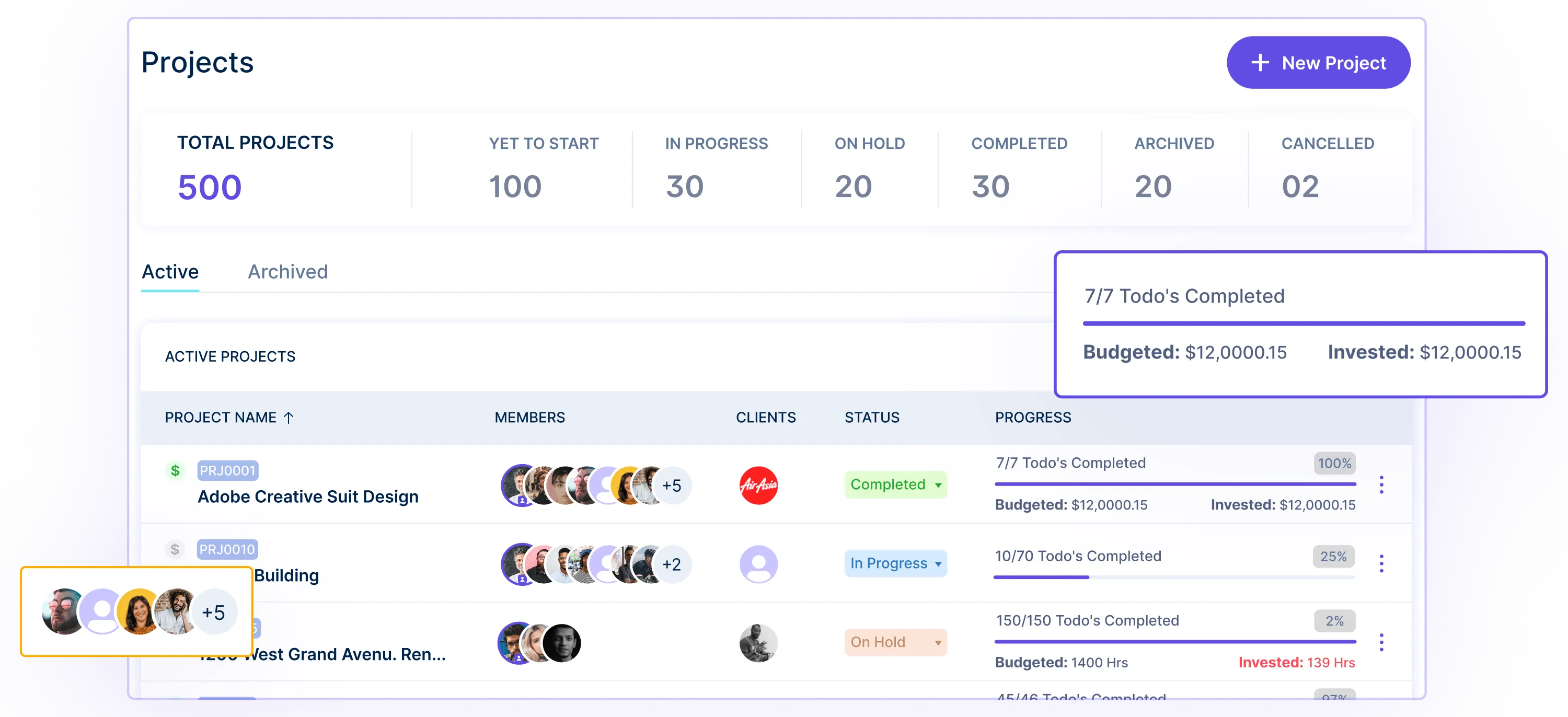
Project management tools such as Workstatus help HR managers keep track of tasks and deadlines while also allowing them to view the progress being made by each team.
This eliminates the need of having manual coordination between different teams and departments and helps HR managers to:
- Create efficiency through automated processes
- Manage multiple projects at once
- Monitor performance and progress in real-time
Challenge 2) Scheduling Conflicts
Managing Scheduling Conflicts often arise when multiple employees need to take off at the same time or have conflicting priorities and commitments.
This requires HR managers to:
- Manage leave requests timely
- Ensure that everyone is available for customer assistance
- Find additional resources to fill the gaps in case of employee unavailability
Solution 2) Opt for Automated Shift Scheduling and Planning Software
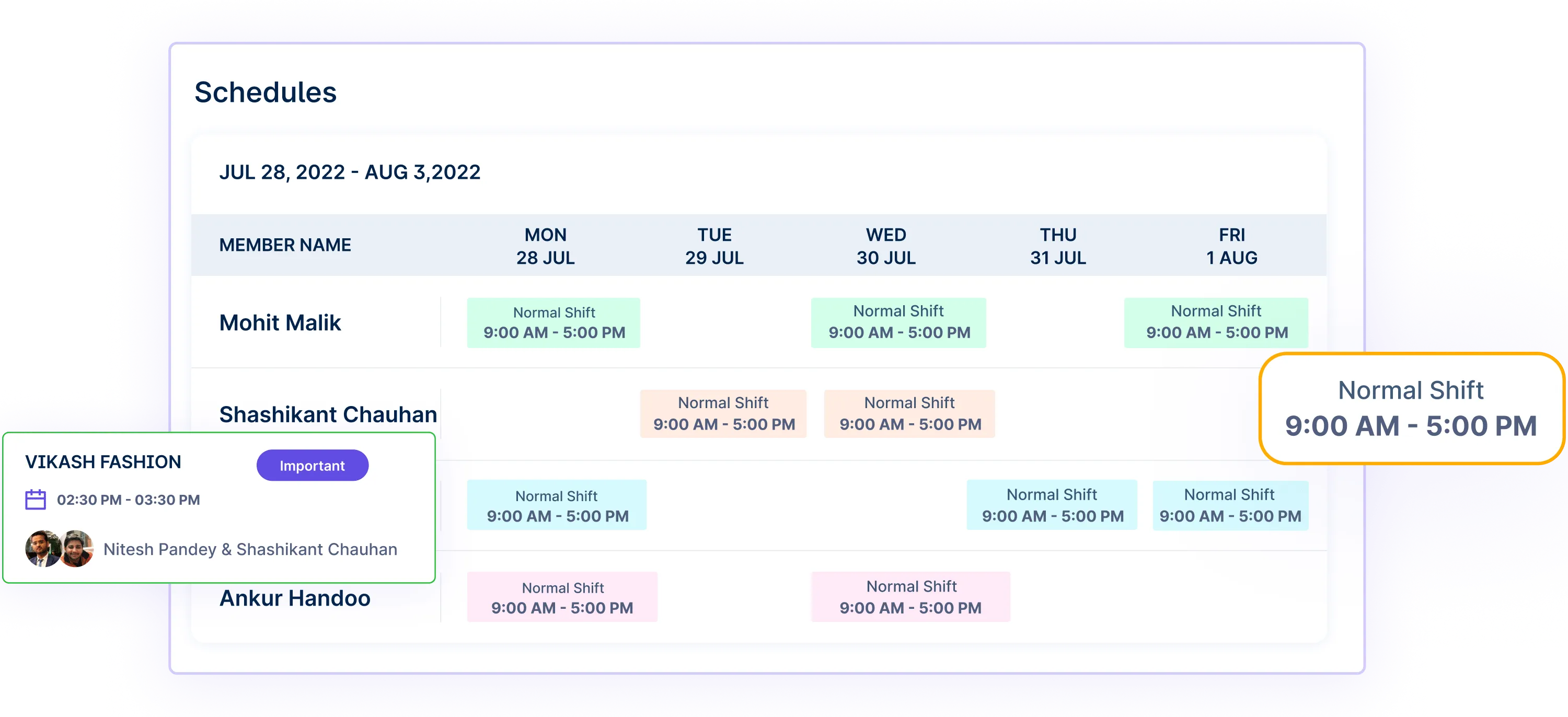
Automated shift planning and scheduling software helps HR managers solve scheduling conflicts by providing them with:
- Real-time views of employee availability
- Schedule tasks efficiently
- Automatically generate shift schedules
By using automated systems to manage scheduling, HR managers can save time and effort while ensuring that all team members get the right shifts at the right times.
Challenge 3) Keeping Track of Employee Attendance and Hours Worked can be Complex
When different individuals work in different shifts or different numbers of hours, it can become increasingly difficult to keep track of their attendance and hours worked.
This requires the HR managers to:
- Develop an effective tracking system
- Follow up with teams regularly to ensure accuracy
- Investigate any discrepancies if they arise.
Solution 3- Integrate Time and Attendance Tracking Systems
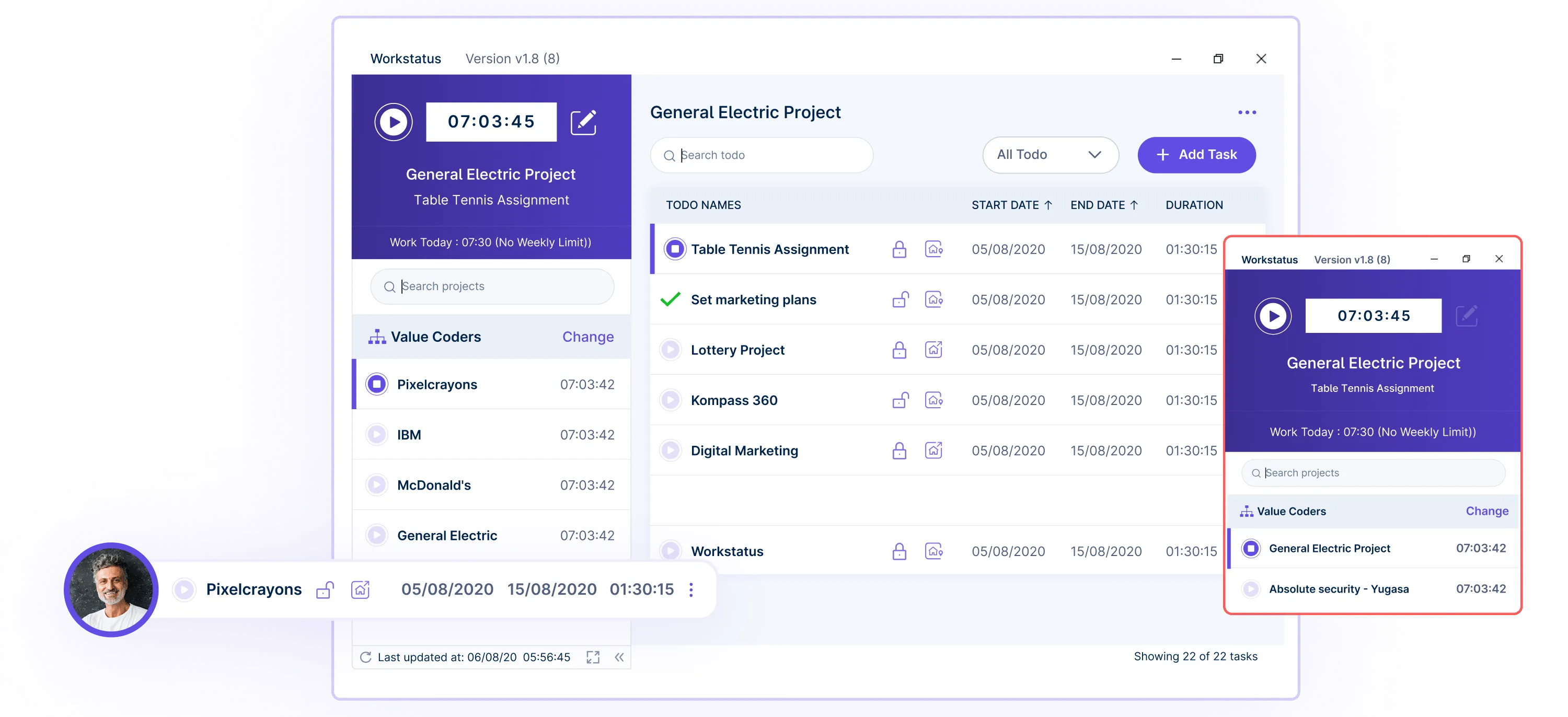
In different work schedules with different numbers of hours, HR managers can use time and attendance tracking systems to effectively monitor employee hours.
This eliminates the need for manual tracking and helps them to:
- Automate time-tracking processes
- Streamline payroll processing
- Monitor tardiness and absenteeism
- Monitor accurate time worked & attendance logged with selfie validation
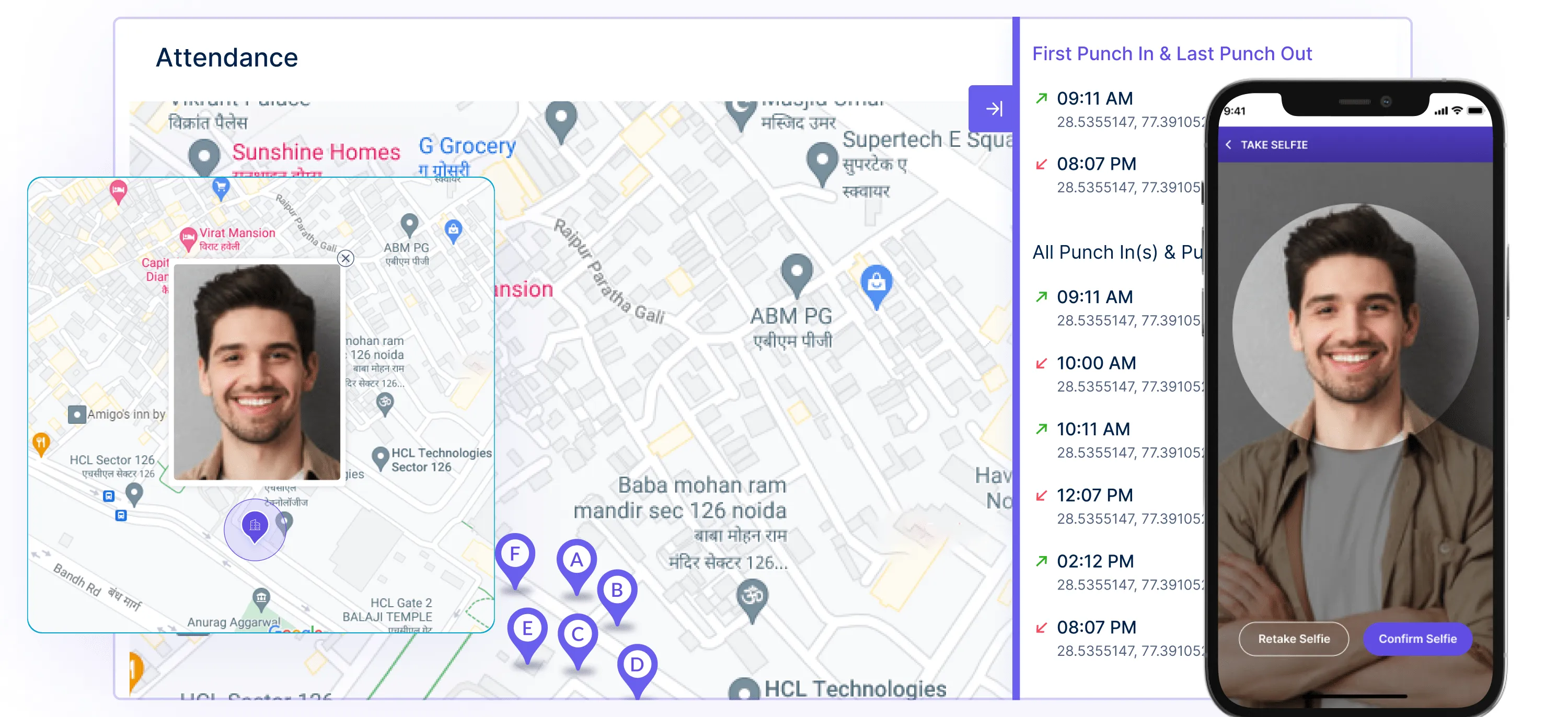
By leveraging such automated systems, HR managers can ensure accuracy in tracking time and attendance while eliminating potential discrepancies due to manual tracking.
Challenge 4) Ensuring Employees Work Efficiently on Different Schedules
When schedules are frequently changed, it can be difficult to ensure they are working efficiently. This requires the HR managers to:
- Monitor employee performance and attendance
- Identify potential areas of improvement and provide feedback or training as needed
- Schedule regular performance reviews
Solution 4) Add AI-Powered Reports And Analytics
AI-powered reports and analytics, such as:
- Time & Activity
- Weekly
- Apps and URL
- Timesheet Approvals
- Project & Todo
- Attendance Report
- Project & To-do
Can help HR managers to:
- Monitor their employee’s productivity and performance
- Identify potential areas of improvement
- Monitor progress & task completion
- Evaluate and improve team dynamics and individual contributions, etc.
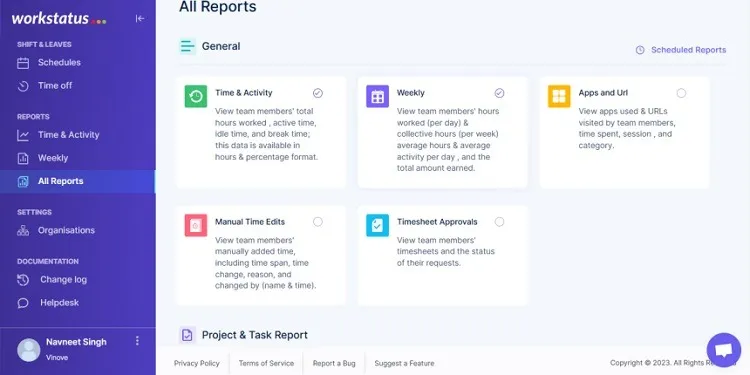
By leveraging AI-powered reports and analytics, HR managers can gain visibility into their team’s activities with greater ease and accuracy, which leads to improved team efficiency and performance.
So these are some challenges and potential solutions when managing different teamwork schedules.
Now that we have covered all the sections, let’s wrap this post up by taking a look at
Workstatus – One-stop-solution for Managing Your Team’s Work Schedules

Workstatus is an AI-powered platform that enables HR managers to manage different types of schedules and help teams be more productive. It offers a suite of features:
- Time Tracking
- GPS Tracking
- Geofencing
- Stealth Mode
- Selfie Validation
- Central Dashboard
- AI Powered Reports
- Productivity Tracking
- Workforce Management
- Active Screenshot Capture
- Employee Activity Monitoring
Workstatus helps organizations create efficient, flexible work schedules while ensuring optimal team performance.
Next Step
Understanding and implementing various work schedules can significantly benefit your team and enhance productivity and employee satisfaction.
By exploring flexible work arrangements, HR managers can create a more inclusive and adaptable work environment that caters to the diverse needs of their employees.
As a first step towards implementing different work schedules, HR managers can opt for Workstatus, the one-stop work schedule management software. It allows HR managers to
- Easily track employee availability
- Arrange shifts
- Optimize manpower in an efficient manner
By leveraging Workstatus, HR managers can enhance
- Employee satisfaction
- Foster work-life balance
- Promote diversity and inclusion
Explore Workstatus today
Make the most out of different work schedules
That’s all for today!
Thanks for reading.


